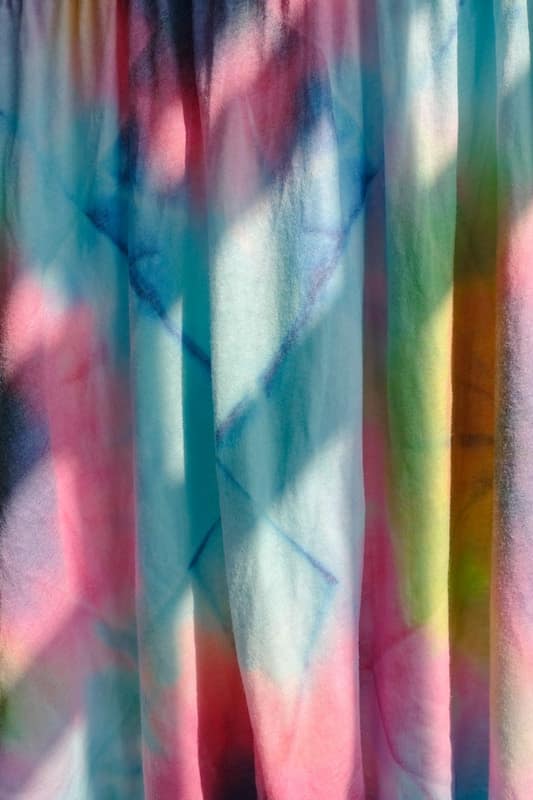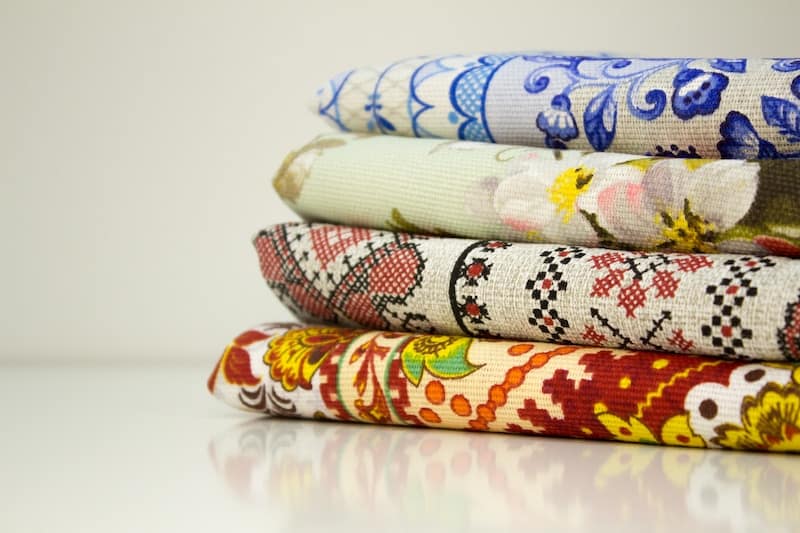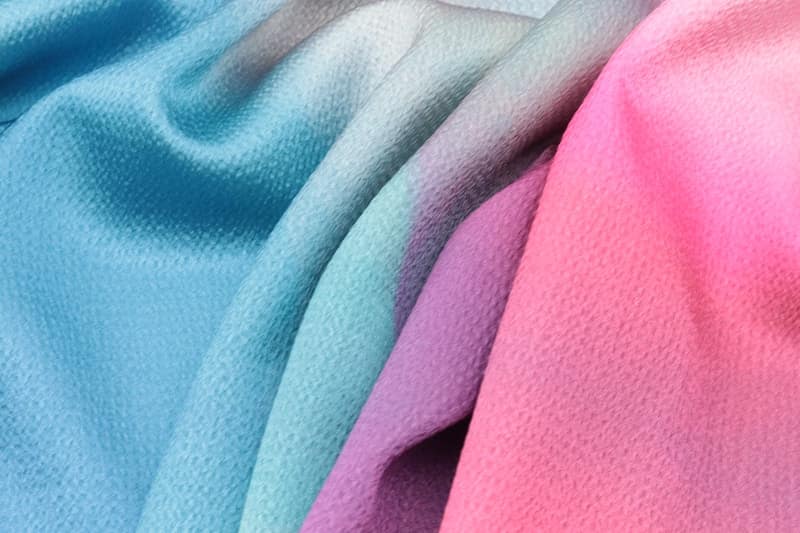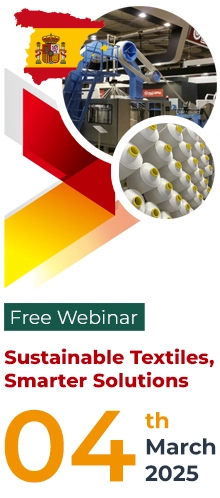By: Kamal Kulshreshth / Market research and International Business Specialist

A sari costs just around Rs. 200 or less on the streets of Ahmedabad. Its 100% polyester, brightly printed and drapes well. All 5 yards of it. That works out to Rs. 40 a metre of printed fabric. Sounds fantastic; till you break it up into the environmental cost that has to be paid for producing it.
Textiles is the second most polluting industry after oil or hydrocarbons. A kg of polyester fabric would involve around 40 to 50 litres to make from fibre to finished printed fabric and even less if the fibre was dope dyed ( a process that imparts colour to polyester while it is being melt spun into fibre).
However, this does not take into account the grey water footprint (wastewater that is a consequence of oil exploration and the process of polyester fibre manufacturing) before the polyester was made available to the textile and apparel value chain. If the grey water is taken into account, every kg of polyester fibre/filament could leave an astounding 50-70 thousand litres of water footprint (Reference), largely because of the groundwater or oceans getting polluted with unearthed petroleum. With recycled polyester, this greywater footprint is much reduced and this is being adopted more and more by image-conscious brands however the carbon footprint is another matter.

The virtual water that goes into producing cotton as captured in a study published in www.sciencedirect.com shows that it costs less water to produce cotton lint in Brasil or USA than in India or Egypt. However the cost of cotton fibre as a commodity does not take this cost of virtual water into account, even after allowing for the relative differences in the quality of fibre.
The table below classifies water content into two parts – Blue and Green. Green is the water that is available as rain and Blue is the water that is harnessed from surface water bodies or from below the groundwater table.
| Table- Virtual water content of cotton products at a different stage of production for the major cotton-producing countries (m3/ton) | |||||||||
| Cotton lint | Grey fabric | Fabric | Final Textile | ||||||
| Blue | Green | Blue | Green | Blue | Green | Blue | Green | Total | |
| Argentina | 5385 | 12,589 | 5611 | 13,118 | 5971 | 13,118 | 6107 | 13,118 | 19225 |
| Australia | 3287 | 2031 | 3425 | 2116 | 3785 | 2116 | 3921 | 2116 | 6037 |
| Brazil | 107 | 6010 | 112 | 6263 | 472 | 6263 | 608 | 6263 | 6870 |
| China | 1775 | 2935 | 1849 | 3069 | 2209 | 3059 | 2345 | 3059 | 5404 |
| Egypt | 9876 | 0 | 10,291 | 0 | 10,651 | 0 | 10,787 | 0 | 10787 |
| Greece | 4221 | 1717 | 4398 | 1280 | 4758 | 1289 | 4814 | 1289 | 6183 |
| India | 5019 | 15,108 | 5210 | 15,817 | 5590 | 15,817 | 5726 | 15837 | 21563 |
| Mali | 3427 | 8752 | 3571 | 9120 | 3931 | 9120 | 4067 | 9120 | 13188 |
| Mexico | 3853 | 1990 | 4026 | 2073 | 4386 | 2073 | 4522 | 2073 | 6595 |
| Pakistan | 9009 | 2460 | 9388 | 2563 | 9718 | 2563 | 9881 | 2563 | 12147 |
| Syria | 7590 | 204 | 7909 | 213 | 8269 | 213 | 8405 | 213 | 8618 |
| Turkey | 6664 | 672 | 6840 | 701 | 7200 | 701 | 7336 | 701 | 8037 |
| Turkmenistan | 13,077 | 961 | 13,626 | 991 | 13,960 | 991 | 14,122 | 991 | 151112 |
| USA | 1345 | 3906 | 1401 | 4070 | 1761 | 4070 | 1897 | 4070 | 5967 |
| Uzbekistan | 10,215 | 105 | 10,644 | 203 | 11,004 | 203 | 11,140 | 203 | 11343 |
| Global Average | 4242 | 4264 | 4421 | 4443 | 4781 | 4443 | 4917 | 4443 | 9159 |
Cotton, though a natural fibre and much preferred for its tactile properties needs either rain or irrigation to grow in the fields. Cotton fields in Punjab are irrigated but those in Maharashtra are mostly rain fed. So within India, this ratio of 5000 to 15000 litres of blue water and green water that goes into cotton production would vary.
When we export cotton, we export a lot of virtual water and that, for a water stressed country is something to think about. Policies, rarther than strictures should help in channelizing more cotton towards conversion within India than allowing it to move out. It must be kept in mind though, that all the irrigation and rain water that goes into agriculture is not used up.
Most of it percolates into the ground, whether polluted with fertilisers and pesticides or not. This charges the groundwater, besides polluting it. Quite a lot of it gets transpired by the crops. The transported and evapourated water ofcourse is not bound by any policy or political boundaries.
A polyester garment consumes less water and energy to make than a cotton garment, gram for gram, starting from fibre to finished garment. That would be a tremendous advantage in a world that is increasingly becoming more and more conscious about carbon footprints. The grey water footprint of cotton textiles is substantially higher than for polyester textiles as well. Therefore if polyester fibre can be modified to be more acceptable in its tactile properties like feel, breathability, etc. it would reduce the share of cotton fibre in the textiles produced in India and the world.
A table published in an article in www.sciencedirect.com shows how around 500 litres of water is needed per kg of fabric produced.
| Table- wastewater characteristics at different targets of processing cotton textiles and permissible limits to discharge into water bodies | |||||
| Process | Waste water volume * (m2/ton) | Pollutants ** (kg/ton) | |||
| BOD | COD | TSS | TDS | ||
| Wet processing | 360 | 32 | 123 | 25 | 243 |
| Bleaching | 30 | 5 | 13 | 28 | |
| Dying | 142 | 6 | 24 | 180 | |
| Printing | 188 | 21 | 86 | 25 | 35 |
| Finishing | 136 | 6 | 25 | 12 | 17 |
| Total | 496 | 38 | 148 | 37 | 260 |
| Permissible | 50 | 250 | 50 | ||
| Limits (mg/l)*** | |||||
| *Source: USEPA (1996) **Source: UNEP (1996) ***Source: WB (1999) | |||||
In the context of polyester vs. cotton in textiles, the recently announced PLI (Production Linked Incentive) scheme by govt. of India favours polyester. Would have been even better better if it allowed PLI to be extended to MSME sector. However one might guess, the govt. machinery would find it difficult to monitor and validate an increase in business volumes if it was opened to thousands of MSME units in the country producing garments. So let the fashion industry be thankful for what comes its way.
To really appreciate what a cotton garment costs, one must start with the fibre itself. Around 20,000 litres of water is required to produce 1 kg of cotton fibre. Then a tremendous amount of energy is spent in converting this fibre to yarn and finally to fabric.
Raw fabric from the loom is not usable. Even white fabric or garment that you buy is wet processed. This requires more water – some 50 litres to free it of the chemicals and residues. A solid colour cotton shirt weighing 150 gms on your shoulder is actually a burden of 3000 kg water.
Sure, most of the water seeped into the agricultural fields and some of it evapourated into air. So it did not really vanish but then it got polluted with pesticides and fertilizers. Even if we disregard the pollution, this 20,000 litres of water could have been running into millions of homes with dry taps instead. India is a water stressed country. Incidentally in some countries cotton crops require just half that amount to grow. So cotton crop might be a cash crop but to subsidise it raises a host of questions that we are hard pressed to overlook but that’s another subject altogether.
Fabric does not have to be coloured or printed. It is coloured or printed because we want to express ourselves. That is fashion. Since 90% of what we wear and use of textiles is coloured, fashion is to blame. It would be unrealistic to think we can go back to using only whites or using only natural dyes for block printing. Instead, we are looking for better more efficient ways to produce textiles.
Dyeing or rendering a fabric blue or red or yellow is another water-intensive process. When we are happy about earning $ 5 per kg of dyed cotton terry towel, we are virtually exporting around 3 to 500 litres of water that was spent in its production if the water was allowed to be released into streams and rivers or simply allowed to seep into the ground.
Terry towel production and its wet processing is largely in the organised sector, which have the wherewithal to invest and operate wastewater treatment plants. MSME usually struggle to have this capability for zero liquid discharge (ZLD) or water recycling. The scale of production makes it difficult to support captive ZLD water management.
Managing and handling a huge amount of water for washing and processing is energy-consuming too. Perhaps someday, the human race will look back and wonder how wasteful and primitive we were with the production of fabric.
There are already indications that humanity is moving towards a more evolved way of producing colours on fabric like waterless dyeing and sublimation printing by heat transfer from paper to fabric.

Polyester fabric for fashion can be almost be done by a waterless process. The raw fabric (woven or knit) would still need to be washed off chemicals and residual oils etc. but with modern digital inkjet printing it can be converted into the most brightly coloured fashion garment using zero water. That’s a lot of water saved but that is not yet incentivised by PLI or any other scheme; saving water that could be potable is still not recognised enough as a valuable resource. Saying that this is a no-water process wouldn’t be 100% correct.
Paper is a consumable in this process and making paper costs water too. However when you import this special paper from countries producing it a lot cheaper than we can in India, you release a tremendous amount of water for direct human consumption.
As a country we are not entirely blind to the importance of reducing wastage and pollution of water. The average end consumer might not care much about sustainability but it might take just one dry year to get NGT to close all industrial activity that requires water irresponsibly. Or maybe not. Maybe govt. will find a way to get us water like the tankers in Chennai or the Ganga canal through Rajasthan. Let’s hope so but not too long ago we heard how industrial units on the banks of Yamuna in Delhi had to shift or close.
Some years ago, processing mills in TN were forced to close operations. They only returned back to business after they ensured ZLD and such like measures were in place with strict monitoring. Cost of operations went up significantly but the industry adapted and survived.
Fashion concepts are changing:
As the world population keeps growing, more and more food and clothing is demanded. That means the textile industry expands. This is good for us in the textile industry, who make a living out of a thriving textile and apparel manufacturing but it is not very good for the planet. This is because the more demand there is for clothes, therefore fashion, the better it is for us.
Therefore what is important for fashion, is important for us. But fashion itself might be changing. End-consumers are becoming acutely aware of the environmental impact a piece of garment has. That means policies and incentives have to be in place to encourage technology and processes that are water efficient, if not waterless.
Tomorrows fashion labels could well be about the total carbon footprint of a dress (energy and water that went into its creating it, including its transport and packing). Young people would proudly don a white or light paste shade knowing they helped reduce the grey water footprint. Futuristic but once brands start quantifying the water footprints saved, fashion would change. After all, fashion is about making a statement.
Recycled polyester is already a well accepted product. The official kit of Indian cricket team and even IPL teams is made from 100% recycled polyester. The coloured jerseys and lowers probably cost a little more water than if they were made from virgin polyester fibres. So fashion can also be misleading at times. This and the waterless digital printing on polyester need to be examined more closely to arrive at a conclusion that yes, we actually saved water and energy.

For investors, it is very important to be future-ready. The world is unmistakably headed towards low carbon footprint. Companies like KG Fabriks, Coimbatore have long been ready with products like their “green denim” that would be preferred by these more responsible, often younger generation of fashion consumers.
Now imagine this kind of denim that is advertised as requiring less than 7 litres of water to make, is also printed with a low carbon footprint digital inkjet printing system and you have a premium fashion item. Others like Elljay Textiles, and Coimbatore have buyers who attach a lot of value to them being a supplier that conforms to fair and ethical business dealing for all stakeholders with their ETI certificate ( https://www.ethicaltrade.org/ ).
ETI is just one of the certifications that are used in textile industry. A garment that has these relevant labels would not just be a fashion item but a fashion statement that is built on responsible consumerism and at the same time would look very different because of the creativity that digital printing could bring to it.
Digital printing is just a 2-decade old technology for adding aesthetic value to fabric in an industry that is centuries old. That digital inkjet printing is the fastest-growing segment in the textile value chain, is a sign of things to come. This kind of innovation and environmentally responsible technologies and processes will assume more and more importance
Lastly, environmental impact is not just an abstract concept but a measurable one. Ecopoints is one such measuring unit. Essentially a European concept, higher the score worse is the environmental impact.
To quote from a Texintel online article, “Ecopoints are used to index the environmental impact of products and processes. 100 Ecopoints equals the environmental impact of one EU citizen per year.
The more Ecopoints, the bigger the environmental impact. In comparison, producing one screen for rotary printing has an Ecopoint score of 7, while producing one kg of ink for digital textile printing only scores 0,3 Ecopoints. When solely looking at these metrics, it is clear that for the production of the consumables used for printing, producing digital textile printing consumables indeed is far less damaging for the environment than producing conventional printing consumables”.
Fashion is evolving; not just on the consumer side but also the supplier side. Will it be enough? Will it be soon enough? Those are questions that only time can tell.


























